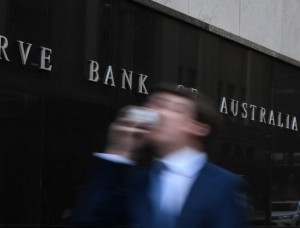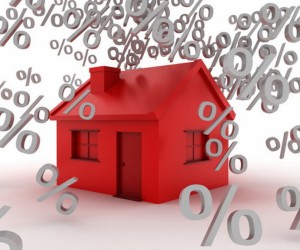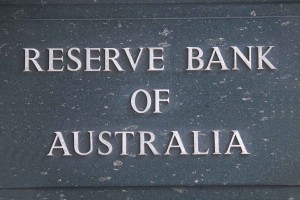The Reserve Bank of Australia has kept rates on hold at 1.5%.
The decision to leave the cash rate on hold today came as no surprise to those following our economy.
To better understand the decision, here’s some interesting expert commentary:
Martin Lakos ( Macquarie) comment:
For 18 months in a row, the Reserve Bank has kept interest rates on hold at 1.5%.
The minutes from April’s RBA meeting once again signals there is still some spare capacity in the labour market.
Macquarie continues to monitor a very early signal, the United States yield curve.
Source: Macquarie
Comments from Tim Lawless:
The Reserve Bank’s hold decision was widely anticipated, considering core inflation is only just nudging the bottom of the RBA’s target range at 2.0% and the labour market continues to show plenty of spare capacity with an unemployment rate of 5.5%.
Of course, the heat has also come out of the housing market, with CoreLogic today reporting another slip in national home values in April, largely driven by weaker conditions in Sydney and Melbourne.
Nationally, dwelling values have been moving through a controlled slowdown since October last year which has taken a great deal of pressure away from the RBA to lift rates in order to curb exuberance in dwelling investment.
Housing investment has well and truly slowed without any direct intervention from the RBA, highlighted by the fact that credit growth for housing is tracking at an annual growth rate of just 2.5%.
Macroprudential policies, which have led to mortgage rate premiums and tighter credit policies, provided the heavy lifting needed to slow down investment activity. 
While Friday’s Statement on Monetary Policy will provide better guidance around the RBA’s thinking, financial markets are still betting that the cash rate won’t rise until July 2019.
Chances are that official interest rates are likely to be on hold for the foreseeable future, however it remains likely that the next move will be up, not down.
Importantly, mortgage rates could be under some upwards pressure without any change in the cash rate, considering wholesale funding costs are rising as US interest rates push higher.
Considering the record high levels of household debt and growing number of interest only loans transitioning to principal and interest terms, higher mortgage rates will test the housing markets resilience.
Source: Corlelogic
Comments from the RBA:
At its meeting today, the Board decided to leave the cash rate unchanged at 1.50 per cent. 
The global economy has strengthened over the past year.
A number of advanced economies are growing at an above-trend rate and unemployment rates are low.
The Chinese economy continues to grow solidly, with the authorities paying increased attention to the risks in the financial sector and the sustainability of growth.
Globally, inflation remains low, although it has increased in some economies and further increases are expected given the tight labour markets.
As conditions have improved in the global economy, a number of central banks have withdrawn some monetary stimulus and further steps in this direction are expected.
Long-term bond yields have risen over the past six months, but are still low.
Equity market volatility has increased from the very low levels of last year, partly because of concerns about the direction of international trade policy in the United States.
Credit spreads have also widened a little, but remain low. 
Financial conditions generally remain expansionary.
Conditions in US dollar short-term money markets have, however, tightened over the past few months, with US dollar short-term interest rates having increased for reasons other than the increase in the federal funds rate.
This has flowed through to higher short-term interest rates in a few other countries, including Australia.
The price of oil has increased recently, as have the prices of some base metals.
Australia’s terms of trade are expected to decline over the next few years, but remain at a relatively high level.
The Bank’s central forecast for the Australian economy remains for growth to pick up, to average a bit above 3 per cent in 2018 and 2019.
This should see some reduction in spare capacity in the economy.
Business conditions are positive and non-mining business investment is increasing.
Higher levels of public infrastructure investment are also supporting the economy.
Stronger growth in exports is expected. 
One continuing source of uncertainty is the outlook for household consumption, although consumption growth picked up in late 2017.
Household income has been growing slowly and debt levels are high.
Employment has grown strongly over the past year, although growth has slowed over recent months.
The strong growth in employment has been accompanied by a significant rise in labour force participation, particularly by women and older Australians.
The unemployment rate has declined over the past year, but has been steady at around 5½ per cent for some months.
The various forward-looking indicators continue to point to solid growth in employment in the period ahead, with a further gradual reduction in the unemployment rate expected.
Notwithstanding the improving labour market, wages growth remains low.
This is likely to continue for a while yet, although the stronger economy should see some lift in wages growth over time.
Consistent with this, the rate of wages growth appears to have troughed and there are reports that some employers are finding it more difficult to hire workers with the necessary skills.
Inflation remains low. 
The recent inflation data were in line with the Bank’s expectations, with both CPI and underlying inflation running marginally below 2 per cent. Inflation is likely to remain low for some time, reflecting low growth in labour costs and strong competition in retailing.
A gradual pick-up in inflation is, however, expected as the economy strengthens.
The central forecast is for CPI inflation to be a bit above 2 per cent in 2018.
The Australian dollar has depreciated a little recently, but on a trade-weighted basis remains within the range that it has been in over the past two years.
An appreciating exchange rate would be expected to result in a slower pick-up in economic activity and inflation than currently forecast.
The housing markets in Sydney and Melbourne have slowed.
Nationwide measures of housing prices are little changed over the past six months, with prices having recorded falls in some areas. 
In the eastern capital cities, a considerable additional supply of apartments is scheduled to come on stream over the next couple of years.
APRA’s supervisory measures and tighter credit standards have been helpful in containing the build-up of risk in household balance sheets, although the level of household debt remains high.
The low level of interest rates is continuing to support the Australian economy.
Further progress in reducing unemployment and having inflation return to target is expected, although this progress is likely to be gradual.
Taking account of the available information, the Board judged that holding the stance of monetary policy unchanged at this meeting would be consistent with sustainable growth in the economy and achieving the inflation target over time.
Source: www.rba.gov.au
Comment from RateCity.com.au:
The RBA has kept the cash rate on hold at 1.5 per cent today, banking the inevitable rate hike for a later date. 
While a hike to official rates may still be months away, several lenders have already lifted some variable rates out-of-cycle, on the back of cost of funding pressures.
The argument for fixing was strengthening with 3-year terms from as low as 3.69 per cent from Easy Street Financial, 5 years from 3.98 per cent from ING, and 10 years from 5.64 per cent from RAMS.
“If you’re someone that likes the security of knowing your repayments will stay the same when the market changes then now might be the time to consider fixing,” RateCity spokesperson Sally Tindall said.
“While most fixed-rate customers opt for a loan term under 5 years, there are lenders out there that will lock in rates until 2028.
“Right now, the major banks’ standard variable rate is sitting at 5.20 per cent, which makes RAMS’ offer of 5.64 per cent for 10 years look fairly level-headed.
“If rates were to rise by 2 to 3 percentage points, then the majority of Australians with a mortgage would likely be facing a rate starting with a 6,” she said.
ABS housing finance data shows fixing has fallen out of favour in line with record-low rates with the proportion of fixed loans dropping to just 14.4 per cent of all new borrowing in February.
“Historically, Australians have missed the window to lock in their rate at the bottom of the rate cycle, and instead fixed when rates were climbing,” she said.
“One of the most popular times in the past to fix was in March 2008, when around a quarter of all new loans taken out were fixed and the cash rate had peaked at 7.25 per cent.
“But with a cash rate at just 1.5 per cent today, and a nod from the RBA Board that rates are set to rise, now might be that window to consider fixing,” she said.
Source: www.ratecity.com.au
Comments from the Finder.com.au RBA Survey:
The cash rate is likely to remain untouched at the next board meeting tomorrow (01/04/2018), but increased rates from the US Federal Reserve may trigger out-of-cycle rate hikes within the Australian lending market, according to finder.com.au research. 
When asked to predict the cash rate decision for May 2018, 97% (29/30) members of the finder.com.au RBA survey forecast no change.
Experts and economists believe a mixed economic climate and low inflation are the main catalysts behind this expected monetary policy decision.
Eighty-seven percent of economists who weighed in on the direction of the next rate move believe the Reserve Bank of Australia (RBA) will push the cash rate upwards.
Economists were also asked to indicate exactly when the next cash rate change may happen.

Here’s what our experts had to say:
Michael Yardney, Metropole Property Strategists (Hold): “RBA Governor Philip Lowe has warned the next shift in the official cash rate will be up rather than down, but there is no reason for this to occur until there is a pick up in economic growth and wages. Both of these are likely to be gradual so there is no case for any near-term change in policy.” 
Jordan Eliseo, ABC Bullion (Hold): “The RBA will keep the cash rate steady at 1.50% at their next meeting. Inflation is soft, property prices are easing, and employment growth looks to be slowing down, so we are still of a view that the next move will be a cut, though this will take some time to come through.”
Shane Oliver, AMP Capital (Hold): “Strong business conditions and employment, rising non-mining investment, strong global growth and the RBA’s own forecasts argue against a cut but low inflation and wages growth, risks around the outlook for consumer spending, the slowing Sydney and Melbourne property markets and tightening bank lending standards argue against a hike. So the RBA is likely to remain on hold.”
Alison Booth, ANU (Hold): ” The fundamentals do not yet justify a change.”
John Hewson, ANU (Hold): “Economy still mixed Household debt constraint”
Malcolm Wood, Baillieu Holst (Hold): “Muddle-through economy, inflation at low end of target band”
Paul Dales, Capital Economics (Hold): “Economic growth and inflation still aren’t strong enough to warrant higher interest rates”
Michael Blythe, CBA (Hold): “Inflation is low, the downtrend in unemployment appears to have stalled and the RBA is emphasising ‘patience’.” 
Saul Eslake, Corinna Economic Advisory (Hold): “None of the data released since the last meeting, nor anything else that has occurred since then, will have altered the RBA’s assessment of the economic outlook sufficiently to prompt a change in its view that current monetary policy settings are appropriate for the time being.”
Peter Gilmore, Gateway Bank (Hold): “The RBA knows that pressure from home price rises is beginning to stabilise, however, it’s still too soon to move on the cash rate with so many borrowers heavily exposed to rising rates and inflation still low.”
Mark Brimble, Griffith Uni (Hold): “Insufficient traction or momentum in the economy to consider any tightening for the year”
Shane Garrett, Housing Industry Association (Hold): “No real inflationary pressures, strong jobs market.”
Alex Joiner, IFM Investors (Hold): “The economy is tracking along the RBA’s own projections, however, private demand is picking up only gradually and consequently inflationary pressures remain modest. Further strong labour market outcomes have not as yet prompted a discernible acceleration of broad-based wages growth that would underpin an inflationary pulse. The RBA has little cause to shift its policy stance as a result. ”
Michael Witts, ING Bank (Hold): “Month on month no significant changes to require changes in policy rate.” 
Leanne Pilkington, Laing+Simmons (Hold): “The fundamentals have remained relatively static, meaning the RBA has no impetus to adjust interest rates at this time. There’s a strong argument to leave the cash rate unchanged for the foreseeable future given stagnant house prices, the marked drop in investor lending and other macro challenges to the economy, especially when the banks cannot be trusted not to hike rates independently.”
Mathew Tiller, LJ Hooker (Hold): “Inflation and wages growth remain too soft to see any movement in the cash rate.”
John Caelli, ME (Hold): “The RBA will want to see inflation and wages improve and lower unemployment before making any changes.”
Mark Crosby, Monash University (Hold): “The RBA have signaled that they will keep rates at low levels for a while longer, but that the next move is likely to be upwards.”
Jacqueline Dearle, Mortgage Choice (Hold): “When the economy can better absorb the impact of an increase and inflation is at 2% or near that target level, Gov Lowe will lift the rate.”
Dr Andrew Wilson, My Housing Market (Increase): “Latest data remains neutral for the current setting environment with ABS March quarter CPI still clearly underwhelming. Predictable end to APRA market manipulation reflects generally moderated housing market activity so RBA can concentrate on main macro game.” 
Alan Oster, NAB (Hold): “Too early to change. Waiting on data regarding wages and unemployment.”
Matthew Peter, QIC (Hold): “After the tepid March quarter CPI report and the ongoing slowdown in the housing market, the RBA can park monetary policy into 2019.”
Noel Whittaker, QUT (Hold): “Won’t drop them – property prices flat – why move.”
Nerida Conisbee, REA Group (Hold): “Although momentum seems to be slowly building in the Australian economy, it still isn’t at a point where interest rates will start to increase. We are now running at quite a different speed to large parts of the rest of the world – our time will come but it is taking lot longer than expected.”
Christine Williams, Smarter Property Investing P/L (Hold): “Even with unemployment reducing and the positiveness within the business sector, and the slowing of the housing market in  many states I feel with the Royal Commission at is peak and the findings that have been released the RBA Reserve Bank would be very courageous to increase interest rates at the present.”
many states I feel with the Royal Commission at is peak and the findings that have been released the RBA Reserve Bank would be very courageous to increase interest rates at the present.”
Janu Chan, St.George Bank (Hold): “The RBA has explicitly stated that the next move is likely to be up, but given that spare capacity remains in the labour market, wage growth continues to be subdued and inflation pressure muted a hike is not likely to occur for some time.”
Brian Parker, Sunsuper (Hold): “Nothing in the recent data to force them to adjust rates one way or the other. Still enough labour market slack to keep them from raising rates, and they’ve made it clear they would be very reluctant to ease at this point.”
Clement Tisdell, UQ-School of Economics (Hold): “I agree with Kohler’s assessment.”
Source: www.finder.com.au



No comments:
Post a Comment